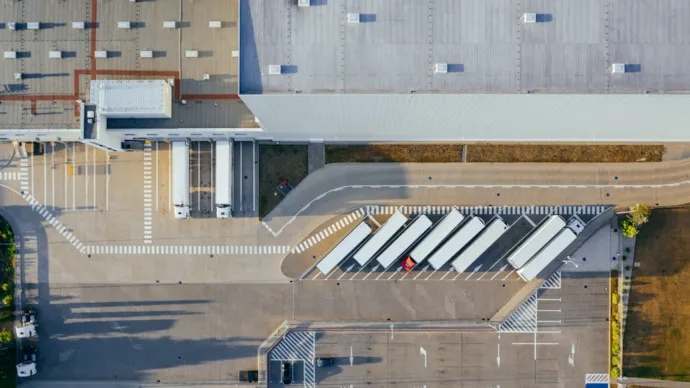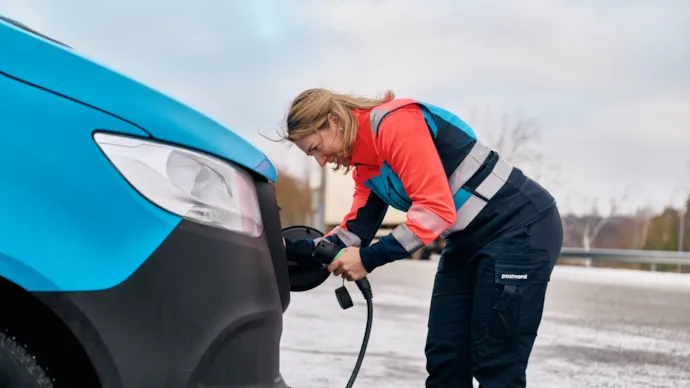Electrifying heavy transport: PostNord’s journey to fossil freedom
Heavy transport plays a central role in PostNord’s logistics and delivery operations. It makes it possible to move large quantities of goods over long distances, meeting the demands of both business and individual customers.
It is also a significant contributor of climate pollution, accounting for over a quarter of CO2 emissions in the EU. PostNord acknowledges its role and has set an ambitious goal of achieving fossil-free operations by 2030, with a strong focus on electrification.
PostNord has already made significant strides in this direction, having electrified over 40 percent of its last-mile fleet. Additionally, PostNord is operating several electric trucks for various clients in the Nordics. However, transitioning long-haul transports to electric drive is not as simple as replacing diesel trucks with electric ones.
“The technology is not yet fully mature when it comes to long-haul heavier transport, and many actors need to coordinate in order for it to work,” says Nima Ghaviha, Green Technology Lead at PostNord. Electric trucks currently have less range, necessitating a complete overhaul of infrastructure and operations. This involves coordinating with grid owners to ensure adequate energy supply, adapting transport and fleet management systems, and installing chargers along routes, especially those with fewer terminals.
Test to succeed
Our manifold strategy for electrifying heavy transport includes conducting pilot projects to test the technology and infrastructure and to refine operations for heavy electric trucks. These pilots are crucial for understanding how electric trucks perform in the real world, especially under challenging weather conditions.
A major pilot project is planned in Finland to test a long-haul electric truck over distances of up to 720 kilometers in cold weather. This pilot is essential, as battery capacity can decrease by 30–50 percent in cold conditions. The project includes public fast charging and 50 percent co-financing for a fast charger. The charger is already in place, and the truck is expected to arrive soon. The goal is to commence the pilot towards the end of 2024 or at the start of 2025.
Progress everywhere
Each country within PostNord’s network has made significant headway toward the shared goal of electrification:
- Sweden: With around 18 electric trucks in operation and 21 more on order, Sweden leads the charge. Fast chargers have been installed, and Segeltorp is set to become an “all-electric” terminal.
- Denmark: Focusing on electrification, Denmark has placed orders for five electric trucks and operates around 40 biogas and biodiesel trucks.
- Norway: Partnering with electrically-powered transport company Einride, Norway operates several electric container trucks, with more on the way.
- Finland: Besides the significant pilot project, Finland is augmenting its charging infrastructure with fast chargers in Vantaa and along key routes.
However, challenges remain. While the cost of electric trucks and heavy-duty chargers is a factor, the lack of capacity in the power grid and inadequate charging infrastructure present the greatest roadblocks. To make the necessary progress in the required timeframe, prerequisites must be in place. These include increased grid capacity, charging infrastructure, incentives such as a bonus-malus system, and growing customer demand for sustainable logistics solutions.
The road to fossil freedom
PostNord is committed to a fossil-free future and believes that with continuous innovation, collaboration, and determination, a more sustainable future in heavy transport can be achieved. As an active member of the Pathways Coalition, a partnership aimed at achieving fossil-free commercial transport by 2050, PostNord is uniquely positioned to drive these changes.
A significant challenge is the lack of capacity in the power grid, a problem not unique to PostNord. With the growing demand for electrification across various sectors, the need for electricity in the future will be even greater. By advancing its own electrification efforts, PostNord can contribute knowledge that drives meaningful progress across the logistics sector.
Nima acknowledges the hurdles ahead but remains optimistic. “In ten years, we will be completely electrified in our last mile segment, and I believe we will have a high degree of electrification even in our heavy transport.”
By combining expertise and addressing these challenges directly, PostNord is confident in meeting its sustainability goals and laying the foundation for a greener future in heavy transport.





